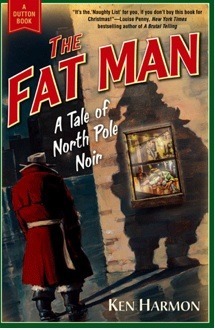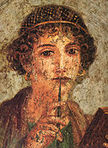Nancy Adams's Blog, page 10
May 24, 2012
God and the Dinosaurs: a gift from my Father
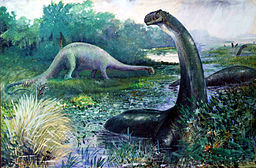
Image from Wikimedia Commons (public domain)
Today is my father’s birthday. He died just over a year ago, but one very special gift that he gave to me when I was small will live in me for the rest of my life.
I was about seven years old and heavily into dinosaurs. Dinosaur books, dinosaur figures, if there were dinosaurs involved, that’s what I wanted.
I had also received a nicely illustrated, big fat children’s Bible.
That created a problem for me. If God had created the world in seven days, how did dinosaurs fit into the picture?
I remember the moment vividly. Daddy and I were sitting in the car on our driveway. It was a Saturday morning, and I’m not sure where we were headed. What was memorable was how he answered my question about dinosaurs and the Bible.
He didn’t use the word “metaphor,” but in essence that’s how he explained it. The seven days weren’t days as we humans understand them, but long periods of time, ages, eons. Decades later, as I read through the psalms, I realized how perfectly his explanation accorded with the verse: “A thousand years in your sight are like yesterday when it is past and like a watch in the night” (Ps. 90:4, translation from the Book of Common Prayer).
The gift my father gave me that day was priceless. It went far beyond reconciling dinosaurs and the Book of Genesis. Science and religion, too often portrayed as enemies, don’t have to cancel each other out.
Years later, this continues to bear fruit. My latest novel-in-progress is about a Jesuit professor who is fascinated by the theology of Teilhard de Chardin, a French Catholic Jesuit priest who was also a distinguished paleontologist and made it his life’s work to reconcile evolution with Christian thought. Until Vatican II, the Catholic Church considered Teilhard a heretic, but today he is seen as an exemplar who was able to reconcile religious belief with scientific inquiry.
My father was raised in a very conservative family, both religiously and socially. He went to college, then on to graduate school, where he received a degree in engineering. Curiosity was always a strong component of his personality, and I can easily imagine him as a child, endlessly asking about everything. He must have done some serious thinking about the very issues that he addressed when I came to him with my question about dinosaurs all those years ago. I imagine he did a lot of hard soul-searching to discover an answer that would engage both his spirit of curiosity–the essence of science–and the religious beliefs that were so important to him. There was no hesitation at all when he answered me that day. He had already thought about it himself, already done all the hard work, and now he was ready to give me one of the most important gifts I would ever receive in my life.








May 17, 2012
Kids and Trees

Photo by Carl E. Lewis from Flickr Creative Commons
When I was small, mimosas were my favorite kind of tree. For one thing, they were just the right size. I wasn’t athletic and I’ve never had a head for heights, but I could easily “climb” into the low fork of the mimosa in our backyard and stay in my little tree nest for the longest time.
I loved playing with the bright pink flowers and palmlike leaves, too. I’d weave the individual fronds around the central stem of the leaf to create little garlands. I’d wear the flowers in my hair or give them to my stuffed animals. The flowers were not only bright and beautiful, but satisfying to the touch. Slightly sticky, with a feathery kind of feel, sort of like cotton candy.
Mimosas have cool bean pods, too, especially when they’ve dried. By late summer, the ground beneath our tree would be covered with the pale brown pods, just begging for closer examination. They were easy to dissect, peeling readily into two halves. The tiny dark brown seeds thus revealed served in their turn as interesting play objects that could be counted and lined up in various ways. Or you could leave the pods whole and shake them, enjoying the satisfying rattle of the seeds inside. All in all, it was a wonderfully tactile plant, just perfect for a small child.
Seemingly small, a trivial thing, yet I think my play with mimosas was one of the experiences that gave me a deep and abiding appreciation for nature, both its beauty and the companionship it offers.
What was your favorite tree or plant when you were a kid? And why?








May 10, 2012
Historical Fiction set in Ancient Times
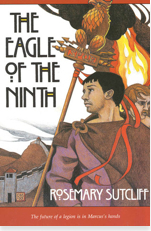 I had so many great comments on my post last week that I thought I’d share what I learned and give the commentators a little plug in the process. I started out intending to list them all, but there are too many for only one post, so I’ve decided to divide them chronologically, starting with those set in antiquity, maybe adding a few more as I go.
I had so many great comments on my post last week that I thought I’d share what I learned and give the commentators a little plug in the process. I started out intending to list them all, but there are too many for only one post, so I’ve decided to divide them chronologically, starting with those set in antiquity, maybe adding a few more as I go.
Barbara Monajem, who writes Regency romance, suggested the Lindsey Davis novels featuring Roman detective Marcus Didius Falco. I’ve read several of these myself and find them highly entertaining. The series is set in the first century of the Roman Empire, beginning in the reign of Vespasian, 70 A.D. Falco’s smart-alecky voice and lively first-person narration put these books in the great P.I. tradition. Think Elvis Cole transported to ancient Rome.
Joe De Marco, who writes the Marco Fontana P.I. series, mentioned Rosemary Sutcliff, who wrote several different historical series for children and young adults from the 1950s on. The Chronicles of Robin Hood, an Arthurian series, and one set in Roman Britain, beginning with THE EAGLE OF THE NINTH. Because my own historical mysteries are set in ancient Rome, I’m especially intrigued by this. I was also a huge King Arthur fan when I was young, courtesy of T.H. White, so the Arthurian ones sound great, too. So many books, so little time…
Among our commentators, Rome seems to hold pride of place, but I’m sure there are other fascinating historical mysteries set elsewhere in the ancient world. One recent series that’s been high on my TBR list is that by Gary Corby, set in ancient Athens. His narrator, like Falco, sounds like a cheeky fellow. My kind of literary guide.
Rather than ask you to add to this already perilously high TBR tower, I’ll ask: What do you look for in a novel set in antiquity? What kind of voice do you like? Since the author is writing in English rather than ancient Latin or Greek, how do you think she or he should approach the story’s language and dialogue? It’s quite different from looking at fiction set in an English-speaking milieu.








May 3, 2012
History and Fiction
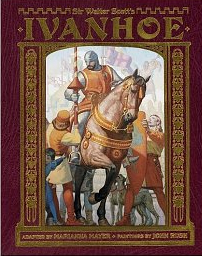 I’ve always loved historical fiction. I think what started me on the kick was Edward Eager’s Half-Magic, one of the first “real” books I read as a kid. In it, the characters referred frequently to Ivanhoe. A few years later, I stumbled on Sir Walter Scott’s classic in our junior high school library and couldn’t wait to read it for myself. I followed this up with some of Scott’s other novels, then The Three Musketeers and its sequels, and later on, stories about Tudor queens: Mary Queen of Scots, Elizabeth I, and the hapless wives of King Henry VIII.
I’ve always loved historical fiction. I think what started me on the kick was Edward Eager’s Half-Magic, one of the first “real” books I read as a kid. In it, the characters referred frequently to Ivanhoe. A few years later, I stumbled on Sir Walter Scott’s classic in our junior high school library and couldn’t wait to read it for myself. I followed this up with some of Scott’s other novels, then The Three Musketeers and its sequels, and later on, stories about Tudor queens: Mary Queen of Scots, Elizabeth I, and the hapless wives of King Henry VIII.
More recently, I’ve become enamored of historical mysteries. Colleagues at work introduced me to Sharan Newman‘s wonderful medieval series set in twelfth-century France, featuring Catherine LeVendeur, bookish daughter of a Parisian merchant. I discovered Barbara Hambly‘s A Free Man of Color and learned about the free black men and women who lived in New Orleans in the early nineteenth century, a fascinating culture I’d not known even existed. A new fave is Jeri Westerson‘s Crispin Guest series that takes place in Chaucer’s England, its hero a delightful mix of Philip Marlowe and Errol Flynn.
There’s room for all kinds here, all sorts of tones and moods, from romps through the desert with Elizabeth Peters‘ indomitable Amelia Peabody to the more somber hues of a trip through ancient Rome escorted by Steven Saylor‘s Gordianus the Finder.
I love these books because I love fiction that takes me to new places, to times that are so unlike our own. Yet the human element remains the same from age to age, and it’s endlessly intriguing to see how those who lived in other centuries had to deal with the universals that we all face: finding love, making a living, dealing with times of crisis.
What are your favorite historical novels? I’d love to add them to my list.








April 26, 2012
Chickadee

from tgreyfox's photostream
In the last few weeks, one of the first sounds I hear when I get up early for work is the sweet soft whistle of chickadee song. Just hearing it makes me happy even when I’m groggy and otherwise unenthusiastic about another work day. (I’m not an early riser by choice!)
Chickadees have more than one call. There’s the repetitive, somewhat nasal song that probably gives them their name, and then the sweet whistle song I’ve been hearing early in the mornings. I found a neat site that has tons of recorded birdcalls. It’s called enature.com. Click here, then scroll down to “Black Capped Chickadee” to hear the two chickadee songs.
What is your favorite bird? (It can be a bird found only in books. Phoenix, dodo, mockingjay, anyone?)








April 19, 2012
Celebrate Earth Day with poet-farmer Wendell Berry
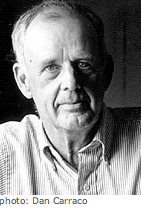 If I were looking for a patron saint for this blog, Wendell Berry would be a good candidate. He’s a prolific writer of poetry, fiction, and essays and has lived as a small farmer in Kentucky for decades. His essays explore various topics, but all are informed by a Christian spirituality that embraces social justice and a deep-rooted love for the earth.
If I were looking for a patron saint for this blog, Wendell Berry would be a good candidate. He’s a prolific writer of poetry, fiction, and essays and has lived as a small farmer in Kentucky for decades. His essays explore various topics, but all are informed by a Christian spirituality that embraces social justice and a deep-rooted love for the earth.
I am most familiar with his poetry, much of which celebrates the beauty and goodness of trees. Think Robert Frost meets Gerard Manley Hopkins. That is, the rural sensibility and topics of Frost combined with the spiritual emphasis and sacramental viewpoint of Hopkins. By “sacramental” I mean a point of view that celebrates the spiritual depth of earthly things, especially nature. (I’m not accusing Robert Frost of lacking spirituality! It’s just that his sensibility is a little more pragmatic than that of Hopkins, while Berry’s is somewhere between the two.)
Here is a sample verse:
“Planting trees early in spring
We make a place for birds to sing
There is no other guarantee
That singing will ever be.”
I know it by heart because it’s one of several “tree poems” set to music in Malcolm Dalglish‘s wonderful album “Hymnody of Earth,” one of my favorites to play around Christmas and the winter solstice. It’s also a good illustration of the way Berry’s work both celebrates and exemplifies the harmony that exists in nature: the interdependence of humans, plants, and animals. Harmony in more than one sense: harmony of music and sound (the birdsong), which is dependent on the harmony fostered by a carefully tended environment. There is a message, but it is inspirational rather than preachy. Ultimately, it is up to us, up to humankind, to provide the nurture that will guarantee the continued beauty of the earth.
If you can’t get outside to plant a tree this weekend, celebrate April 22′s Earth Day by picking up a book of Wendell Berry’s. In fact, read something of his regardless of how you spend the day. If you love the earth, you’ll find a kindred spirit in his words.








April 11, 2012
Death of a Little Grove
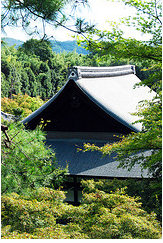
"Arashiyama near Kyoto"photo courtesy of katclay (Flickr Creative Commons)
I took a day off from work today and for a while was in a great mood.
I wrote nearly 2500 words in my WIP, a near-record for me, then took a walk to the post office and drugstore.
It is a beautiful day, a bit on the cool side, but after the record-breaking heat of March that's fine with me. The cherry trees are all in bloom, the tulips are up, everything is leafing out. Ah, the joy of spring.
Going back from the drugstore, I took a different route home. On my way I passed a house that had seen some changes over the last few months, changes that didn't bode well.
Last year at this time, the house, a charming little stone cottage, was surrounded by trees. It always made me think of a house in a fairy tale, snugly tucked in its own little miniature forest. The edge of the yard that borders the sidewalk and road was planted with a little row of fir trees, and a new one or two seemed to be added each year. Beyond them, the yard was chock full of other green, leafy companions. I always smiled when I passed it; it was like a little Christmas-tree farm, and I knew a kindred spirit lived there.
A few months ago, we noticed that the lamppost had fallen down. The next time we passed, it was still there, untended. My husband and I wondered about the person who lived there: had they died, been taken ill? I thought of my parents in their last years after my father's sudden illness. Neither my sister nor I lived in the same town and our visits were too full of care-taking to have much energy left to think about yard work. Something similar had happened here.
All through the winter the lamp post remained like that.
Then today as I passed, I saw the house laid bare. Naked, denuded, alone.
Nearly all the trees surrounding it had been cut down, including two humongous trunks that looked like they had been venerable sycamores. Stacks of wood were piled in the dirt-bare yard. A few straggling little firs were left at the border of the yard, a pitiful remnant but they may be gone, too, the next time. If trees can feel, what must they have felt to have seen the butchering of their elder brethren?
I felt like crying. The wanton destruction cast a pall on the beautiful day.
And I felt rage. I wished for an army of Ents to come down and beat up those responsible.
For laying waste such beauty.
For such blatant disregard for another form of life that gives so much to humanity.
All I can do is bear witness to their destruction.
I wonder if the owner is dead. Or in the sterile confines of a nursing home. My heart goes out to that kindred spirit who loved trees as I do.








April 4, 2012
Timeless by Gail Carriger : a review
My rating: 5 of 5 stars
A delightful end to the steampunk fantasy series (though we're promised a new series featuring the heroine's daughter–Yay!). Vampires, werewolves, Victorian hats, oh my! New and unexpected depths are given to some of our favorite secondary characters and Alexia's 2-year-old daughter gives rise to some of the funniest moments in this Woodhouse-meets-vampires world.
Ms. Carriger finishes the series with a bang: the best yet. Wonderful job of wrapping it up, yet leaving enough so that we're anticipating the continuation of the new series (set in the same alternate universe). Though still retaining its light-hearted tone, TIMELESS also touches deeper issues in a heartfelt way.








March 28, 2012
LOL
Yesterday afternoon I was reading on the train, minding my own business, when a young man seated in front of me turned to give me a look.
What was his problem? All I was doing was reading, right?
Well . . . um, I was laughing, too.
Chuckling, chortling, burbling with glee. In my hands was Gail Carriger's newest vampire-werewolf-steampunk-and-parasol confection.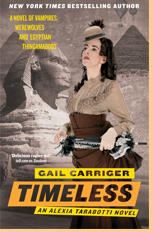
The heroine's two-year-old daughter had just turned into a werewolf cub, dashing about the public room of a first-class ocean liner , tossing her diapers but retaining her frilly dress. Prior to that, there was a scene with the heroine's dear friend, Ivy, that was worthy of Monty Python. Silly Walks, to be exact.
If I'd been sitting in the privacy of my own home, I would have been rolling on the couch, screaming with laughter.
I assure you, I restrained myself: no rolling or screaming on the train.
The last time I remember this happening was when I was reading Ken Harmon's THE FATMAN: a North-Pole Noir. Think "Rudolph the Red-Nosed Reindeer" narrated not by the avuncular voice of Burl Ives but a raspy-throated Humphrey Bogart channeling Philip Marlowe or some other noir flatfoot.
Anyway, nobody looked at me that time. Maybe they all had their earphones on.
Dear Reader, has anything like this ever happened to you? Please tell me I'm not the only one!








February 19, 2012
Midwinter Musings
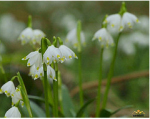
Snowdrops...Pearl Anniversary from Flickr Creative Commons, sarniebill1 Not feeling to well, sorry.'s photostream
"Midwinter spring is its own season." So begins T.S. Eliot's "Little Gidding," one of my favorite poems.
But what, exactly, is "midwinter spring"? Is it analogous to autumn's Indian summer? Not having lived in England, I really don't know. I'm sure I could find a commentary on the poem that would explain it, but that's never been my style when reading TSE. I prefer to let the phrases wash over me, to explicate their mysteries slowly, in my own way and in my own time, to use his poetry to interpret my own life rather than searching for the "correct" meaning.
What I do know is that the weather feels indeed like spring in the midst of winter. Yesterday was a balmy 50-plus degrees. Snowdrops and crocus are peeping up through the grass. This is not typical of eastern Pennsylvania in February.
Midwinter, as in the official date, occurs on February 2nd. What we here in the States call "Groundhog Day." I prefer the older designations: Midwinter or the beautiful and evocative "Candlemas," which means "feast of candles." Which would you rather celebrate?
Another fascinating set of midwinter spring words is the English "Lent," the penitential season of the church year that precedes Easter, and the German "Lenz," which means "spring." I read somewhere that both have their root in the same word from which "length" comes and that both refer to the lengthening days of this season. I thought that was lovely. Lent has such somber overtones; I like the idea of its being connected to spring; it makes the season feel more like a spiritual spring-cleaning than a period of deprivation and gloom.
My own life at the moment feels a bit like midwinter spring, too. Slowly, slowly, winter is giving way to the hope of spring. Things at the day job are in a ferment of transition, much of it stressful. But after an initial period of discomfort, affairs in my own little sphere have settled down and the next few months promise a rare equilibrium–until the next stage of disruption takes place. Though more difficult changes lies ahead, I feel oddly at peace, experiencing my own little spring in the midst of a winter of discontent and change.
Much of this has to do with my current WIP (writer-speak for Work in Progress, i.e., what I'm currently writing). It's different from anything else I have written: suspense with an element of fantasy (think Hitchcock with bits of The Twilight Zone occasionally thrown in–at least that's the intent). And it's, so far (fingers crossed and knocking on wood!), going well. I think that's one of the reasons writers keep writing; it fuels something deep down inside.
What is your midwinter like this year? Do you have plans for spring-cleaning to celebrate the lengthening days that will bring Lent and Lenz?










